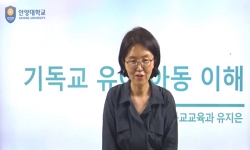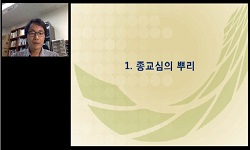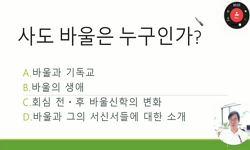The purpose of this essay is to comprehend the Christology of Schleiermacher in relationship with Chalcedonian Christology, compared with Maximus', which attests to Christology's relationship with spirituality. Schleiermacher's Christology has not dev...
http://chineseinput.net/에서 pinyin(병음)방식으로 중국어를 변환할 수 있습니다.
변환된 중국어를 복사하여 사용하시면 됩니다.
- 中文 을 입력하시려면 zhongwen을 입력하시고 space를누르시면됩니다.
- 北京 을 입력하시려면 beijing을 입력하시고 space를 누르시면 됩니다.

기독론과 영성의 관계 연구 ― 고백자 막스무스와 슐라이어마허의 기독론을 중심으로 = A Study on the Relation of Chalcedonian Christology with Spirituality in Maximus the Confessor and Schleiermacher's Christian Piety
한글로보기https://www.riss.kr/link?id=A107773819
- 저자
- 발행기관
- 학술지명
- 권호사항
-
발행연도
2021
-
작성언어
-
- 주제어
-
KDC
200
-
등재정보
KCI등재
-
자료형태
학술저널
-
수록면
121-164(44쪽)
- DOI식별코드
- 제공처
-
0
상세조회 -
0
다운로드
부가정보
다국어 초록 (Multilingual Abstract)
The purpose of this essay is to comprehend the Christology of Schleiermacher in relationship with Chalcedonian Christology, compared with Maximus', which attests to Christology's relationship with spirituality. Schleiermacher's Christology has not deviated from the orthodox tradition, Chalcedonian Christology, but rather reconfigures its combination of apparently disjunct Christological traditions in a new and creative way. Hypostatic union, two natures―humanity and divinity―are united in one hypostasis, is the nucleus of Chalcedonian Christology. Schleiermacher, however, in and through the spirit of Romanticism, revises that Jesus Christ is in the union between God-consciousness and self-consciousness in which human being's self-consciousness can be emptied and filled with God-consciousness. In this sense, the concept of grace and sin, as the content of soteriology and Christology, is understood through the hypostatic union of God-consciousness with self-consciousness. It is not a familiar understanding of the hypostatic union. However, this evolution of the hypostatic union with consciousness is similar to Maximus' developing way of the hypostatic union with energy and will. Christ has two energies in one hypostasis that is extended to two wills in a person. Will is one of the crucial factors to understand who a human being is, but which has to be understood with self-determination. The self-determination cannot be ordered toward God, but the natural will, created as God's image, can be united by the Divine will in Christ. The two natures went over to two wills, for Maximus, which might be valued as an unconventional approach to hypostatic union. Spiritual theology with Maximus' new comprehending of the hypostatic union is interpreted as Christian piety by Schleiermacher. For this reason, illustrating the Christology of Schleiermacher and Maximus and their relationship is crucial to be connected to the Chalcedonian Christology. This study reveals Christology and spirituality, or Christian piety, as the foundation of doctrine, asserted by Schleiermacher, is in a strong relationship.
동일학술지(권/호) 다른 논문
-
‘어머니-교회’의 관점에서 고찰하는 코로나-19 시대에 직면한 한국교회
- 한국조직신학회
- 강응섭 ( Kang Eungseob )
- 2021
- KCI등재
-
- 한국조직신학회
- 김민석 ( Kim Minseok )
- 2021
- KCI등재
-
- 한국조직신학회
- 김선권 ( Kim Sunkwon )
- 2021
- KCI등재
-
- 한국조직신학회
- 김정형 ( Kim Junghyung )
- 2021
- KCI등재




 KCI
KCI KISS
KISS





